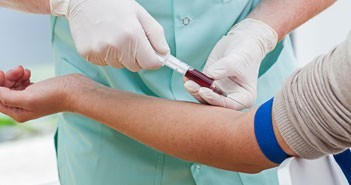Microfluidic device detects cancer cells in blood

Researchers from the University of Illinois (IL, USA) and Queensland University of Technology (Australia) have developed a novel microfluidics device that can isolate individual cancer cells from a patients’ blood. This device has the potential to be used in clinics for rapid, cheap liquid biopsies to detect cancer and develop targeted treatment plans.
“This new microfluidics chip lets us separate cancer cells from whole blood or minimally-diluted blood,” explained Ian Papautsky, Professor of Bioengineering at the University of Illinois. “While devices for detecting cancer cells circulating in the blood are becoming available, most are relatively expensive and are out of reach of many research labs or hospitals. Our device is cheap, and doesn’t require much specimen preparation or dilution, making it fast and easy to use.”
The development of a liquid biopsy would eliminate the need for uncomfortable and expensive tissue biopsies that require a patient to undergo a surgical procedure as part of cancer diagnosis. It could also enable detection of cancer in organs that are difficult to access through traditional biopsy techniques, including the brain and lungs.
For liquid biopsies to be successful, cancer cells must be isolated from the blood. Circulating tumor cells are present in extremely small quantities in the blood, approximately one per 1 billion blood cells, making them difficult to isolate. “A 7.5 mL tube of blood, which is a typical volume for a blood draw, might have ten cancer cells and 35–40 billion blood cells; so we are really looking for a needle in a haystack,” commented Papautsky.
To do this the new device utilizes microfluidics technologies, capitalizing on inertial migration and shear-induced diffusion to separate cancer cells from blood as it passes through ‘microchannels’ formed in plastic. “We are still investigating the physics behind these phenomena and their interplay in the device, but it separates cells based on tiny differences in size which dictate the cell’s attraction to various locations within a column of liquid as it moves,” explained Papautsky.
In the study, published in Microsystems & Nanoengineering, 5 mL samples of healthy blood were ‘spiked’ with ten small-cell-lung cancer cells then run through the device. The results demonstrated that 93% of the cancer cells were recovered using the microfluidic device – a large improvement on previously-developed devices that showed recovery rates of 50–80% in comparison. Additionally, they were able to separate cancer cells from six out of eight blood samples taken from patients diagnosed with non-small-cell lung cancer.
Further research is required to develop a microfluidics device that can separate out circulating tumor cells as well as detect DNA from cancer cells in blood from lung cancer patients. The research will use blood from patients being seen at the University of Illinois Cancer Center to test the efficacy of the prototype device in the hope that it may be used for liquid biopsies in the future.
Sources: Zhou J, Kulasinghe A, Bogseth A, O’Byrne K, Punyadeera C & Papautsky I. Isolation of circulating tumor cells in non-small-cell-lung-cancer patients using a multi-flow microfluidic channel. Microsyst. Nanoeng., 5(8) (2019); https://today.uic.edu/new-microfluidics-device-can-detect-cancer-cells-in-blood



